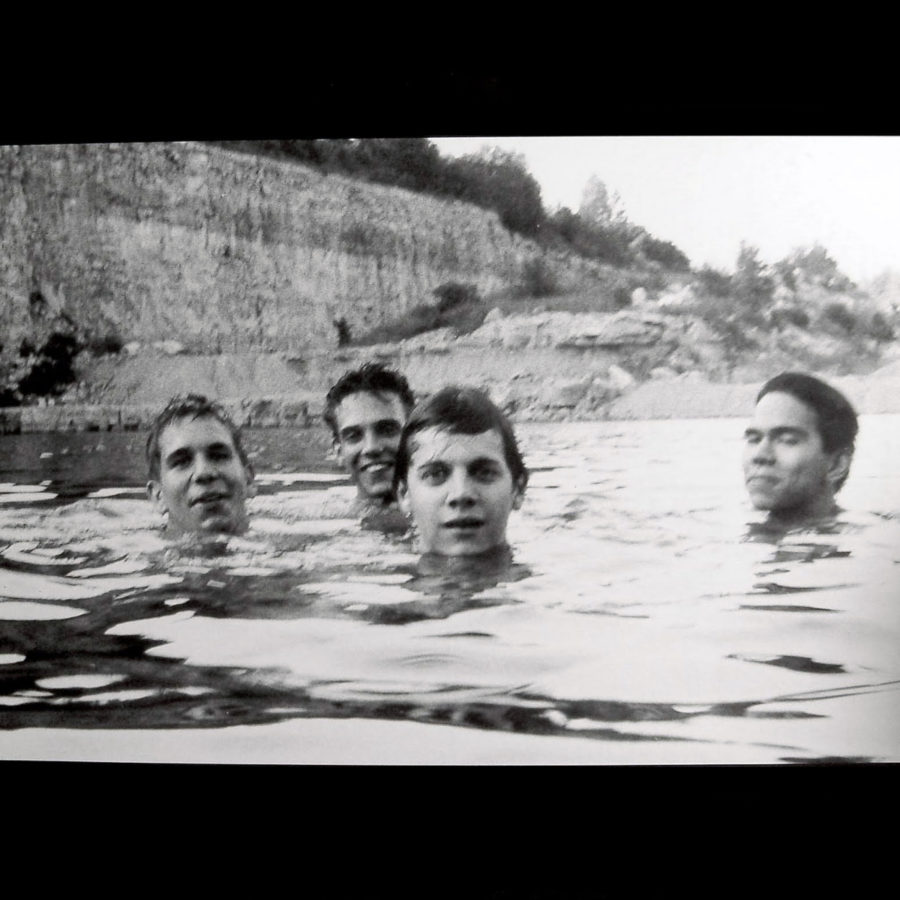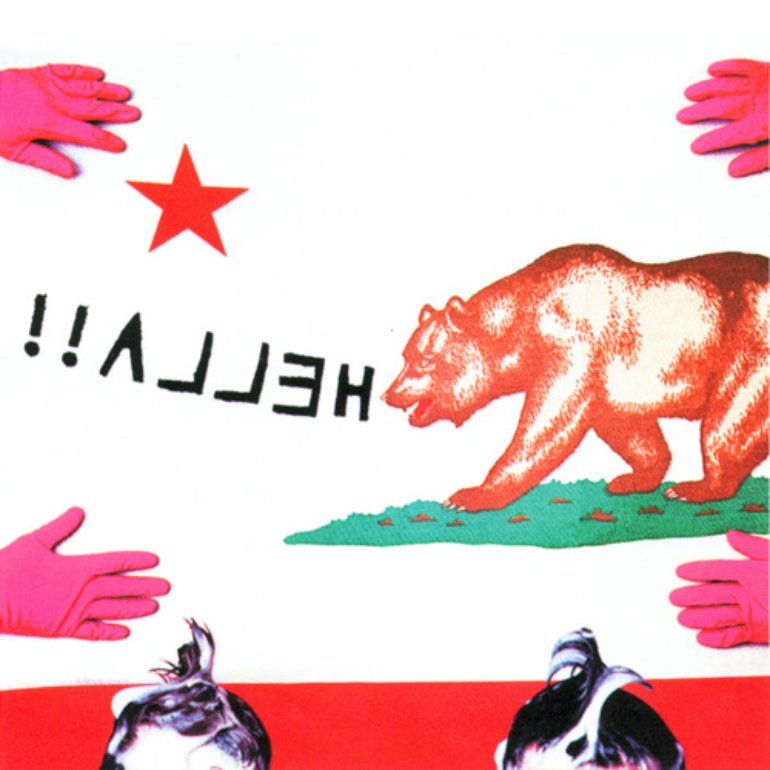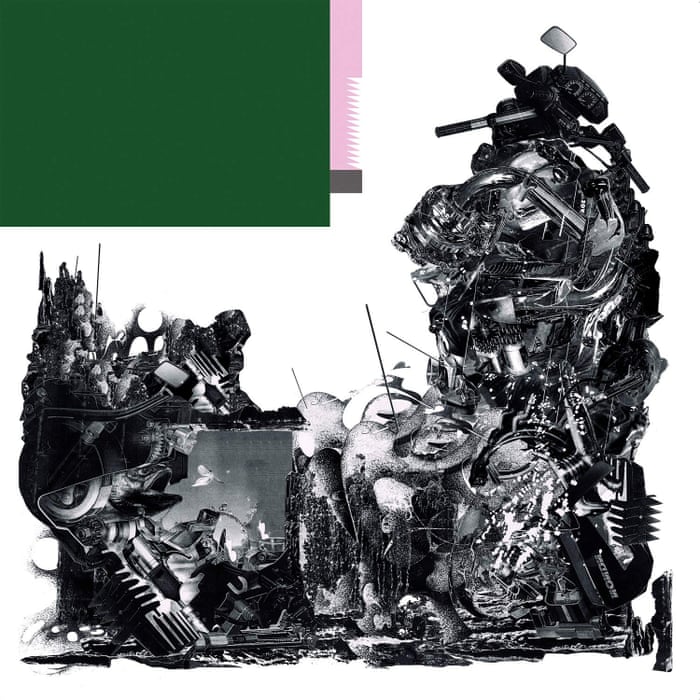Welcome to the first installment of our new music feature Music Crash Course, in which we highlight musical genres, movements, time periods, record labels, and scenes that are important to the history of popular music. In our first installment, Hunter Church takes a look at the math rock genre.
When people look to late ‘80s and early ‘90s rock music, they often highlight the world-shaking growth of grunge, and specifically Nirvana. It’s hard to blame them; as the genre would boast enormous commercial success following albums like Nevermind (1991), and Ten (1991), and is one of the more recent mainstream rock movements. But spreading its wings at the same time as grunge, was another underground community surrounding what is now known as math rock.
Rather than spawn from a single centralized area, like Seattle, math rock developed across many regions, often as offshoots of other communities. The early, most influential groups came from everywhere, with the most accurate location of the community potentially being “the Midwest,” but even that leaves room for error, with bands like Polvo being based in North Carolina. This lack of cohesion in the community has arguably stayed to today. Occasional arguments break out about certain groups, and whether they’re really math rock, and the genre is often confused with the very similar post-rock, which grew around the same time.
When looking towards the definition and categorization of the genre, the struggle makes even more sense. Taking inspiration from progressive rock bands like King Crimson and Rush, math rock puts a heavy focus on instrumental composition and technique. While sure, instrumentals are always important to rock music, they steal the entire show in math rock, with several of the bands lacking vocals altogether. Further than that, it’s characterized by the rhythmic complexity and technical prowess inside of the composition. Most math rock bands will use incredibly unique time signatures, or consistently shift them throughout a song, to further complicate the overall sound. The name is therefore used to signify how thought-heavy it is, similar to how IDM (intelligent dance music) is characterized in the electronic music community. The downside to using this as the defining attribute is that it’s hard to call a band purely “math rock,” and instead, it’s often fused with other genres, most often emo or noise rock. But nonetheless, it continues as a large-but-hidden community among rock and roll fans.
Slint – Spiderland (1991)

It’s difficult to think of a more influential and landmark math rock record than Slint’s Spiderland. Coming right after the genre’s birth, its approach to songwriting was as forward-thinking and unique as ever. It wasn’t the first album to use large dynamic shifts, but it’s one of the best examples of how to use them effectively. Each track is condensed into a small and subtle package until it inevitably explodes. The hushed, monotone vocal delivery sounds like a standard prose, and when hidden behind lush guitars, it will send chills down your spine. Thirty years later, it maintains as one of most raw and harrowing records ever, and a wonderful highlight of the genre’s beginnings.
Polvo – Today’s Active Lifestyles (1993)
:format(jpeg):mode_rgb():quality(90)/discogs-images/R-622169-1200341972.jpeg.jpg)
Polvo’s sophomore record is a high-powered exploration of guitar rhythms and tones. Sometimes they’re gorgeous and intimate, like on the very muted “My Kimono,” but most of the time they’re not, like in the fast-and-loud, “Thermal Treasure.” Almost every track is an explosion of pure energy, but they’re each tame and melodic enough to get stuck in your head for days. It’s lo-fi, it’s cluttered, and it’s abrasive, but with a pop sensibility that makes it all worth it.
Shellac – At Action Park (1994)
:format(jpeg):mode_rgb():quality(90)/discogs-images/R-371395-1538756251-6292.jpeg.jpg)
Simplistic and minimal are words not often uttered in reference to a math rock project, but this is as close as it gets to being true. Short, repetitive guitar chords fall over some very deep and groovy bass lines to create a sound almost similar to punk at times. The speed and brevity of certain songs mirror that sentiment, with “The Admiral” lasting only a very short two minutes. The confidence, attitude, and enjoyment shown on this record are incredibly impressive for a freshman effort.
Don Caballero – What Burns Never Returns (1998)

It’s all about the drums and guitars with Don Caballero, and that doesn’t change on What Burns Never Returns. The guitars bounce from effect to effect, oftentimes within the same song, while drummer Damon Che attempts to discover every beat physically possible. Whether it’s four minutes or ten minutes, each cut seems to have infinite layers. If it weren’t for the genius composing and perfect synergy, this could easily pass as forty-seven minutes of garage jam sessions. But instead, it’s a complex masterpiece, perfecting the original band’s sound, before altering it a few years later.
Advertisement
American Football – American Football (1999)
While many see this as a cornerstone in the emo genre, it’s just as important to math rock. Few have been able to pretty-it-up like American Football. It fills the void of accessibility with bright chords, and tracks like “Never Meant” prove lyrics are more than welcome, too. But more than its effect on the genre, it’s simply a good project in itself. The echoes of guitars, drums, and even trumpets come together in an emotional snapshot of late ’90s angst that shows us melancholy can be enjoyable.
Hella – Hold Your Horse Is (2002)

Hella shows almost every experimental side of math rock on Hold Your Horse Is. If you didn’t know that going in, the chip tune intro lets you know right away. From clap tracks, to electronic distortions, to what sounds like banging pots and pans, they institute almost every sound imaginable into a genre entirely based on guitars and percussion. But the guitar playing is still as impressive as any other math rock project. There isn’t another song like “Brown Metal,” and there isn’t another album like Hold Your Horse Is.
Lightning Bolt – Wonderful Rainbow (2003)
:format(jpeg):mode_rgb():quality(90)/discogs-images/R-14008895-1566737837-5015.jpeg.jpg)
Lightning Bolt may be the one and only band to make math rock without a single guitar, but you wouldn’t be able to tell. The heavy distortions of Brian Gibson’s bass make it as versatile as any instrument out there, and it has to be. As a result, they’re allowed to make some of the more unique music available, with just two instruments. Wonderful Rainbow is especially unique, as it combines the ear-blasting, relentless aggression Lightning Bolt is known for, with the more accessible tracks like “Wonderful Rainbow.” So you can enjoy the noise, and save your ear drums for just a tad longer.
toe – the book about my idle plot on a vague anxiety (2005)

Japanese band, toe, broke new ground with their brand of jazz-infused math rock. Math rock is often atmospheric, often beautiful, but even in its prettiest moments, it’s rarely happy. And while it’s not certain these tracks are supposed to be positive, their effects certainly are. The guitars are laid back to the point of being calming. Each melody brings its own bright and sunny depiction of the world. And, as always, the drumming is outstanding.
Advertisement
TTNG – Animals (2008)

TTNG changed the game with their debut record, Animals. With a clean, modern rock sound, it’s by far the most accessible album on this list, and without a doubt one of the more accessible math rock records ever. But it doesn’t lose sight of what makes the genre work. They do more with guitar tapping than most bands do with guitars as a whole, and the drums are chaotic enough to accompany it, while being tame enough for Stuart Smith’s voice.
black midi – Schlagenheim (2019)

If anyone thought math rock was dead, black midi is here to prove them wrong. In a noisy, jazzy, and haunting combination of rock sounds, the UK-based band brings a creative mind to a genre that’s quite hard to break into. Through punk, metal, indie, electronica, and more, it’s hard to think of a space they didn’t inch themselves into. Each version of their sound is as intriguing as the next, showing just how underdeveloped rock still is.
Advertisement







